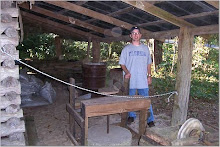Preserving Memory by Edward Linenthal's opens with an introduction of the opening of the Holocaust Museum. The opening chapters describe the political and spiritual conflicts that came about during the development of the national memorial to the victims of the Holocaust. The Carter Administration was accused by their opposition of creating a commission whose task was to create a national Holocaust memorial as a political ploy to garner more Jewish interest in the administration. The author provides several discussions of the conflicts that arose as the museum was being planned and built. The book comprises these discussions along with other case studies to show the extensive history of the governmental decision that were made regarding the issues related to ethnic inclusion of the museum in United States history.
The story of architect James Ingo Freed is told in great detail. The author tells how Freed researched and implemented his plans for the museum. The tells how critic Herbert Muschamp describes Freed’s use of brick, steel, and glass in his design as invoking the hardship form of the Holocaust. The book also discusses the challenges that came about when the decision to set up a Holocaust memorial on land adjacent to the national mall in Washington, DC came forth. The design of the museum and what would be housed in it had to be decided so it would not take away or diminish the other monuments on the national mall. The main hardship the museum faced was that it might be thought of as a memorial to the mass murder that took place and might prevent tourists from visiting and learning about the Holocaust.
Kalman Sultanik who was a Holocaust survivor and served as vice-president of the The World Jewish Congress wanted the museum to use the memorial space for the commemoration of the six million Jews killed and not to treat the killers or the countrymen as victims because they were not worthy of commemorative respect. The museum had to consider all of this while still presenting the horrors of the Holocaust. The museum had to be careful in its presentation because it still had the task to protect its visitors from the horrible and graphic events that took place under Nazi rule.
Linenthal provides the reader with the process the developers used in personalizing the story of the Holocaust in the museum. He tells how several artifacts from the time period were gathered and the measures that were taken to protect the artifacts as they made their way to the United States. Jacek Nowakowski is described by Litenthal as playing a crucial role in the negotiations with officials from Auschwitz and Majdanek that to place in gathering the artifacts for the museum.
Linenthal lets his readers know that several questions came about and had to be answered about the artifacts. These questions included such things as what should be considered sacred, such as the hair that had been sheered from the prisoners, the shoes and clothing from those killed, and other personal belongings of victims of the death camps. He tells how there was a great difficulty in answering these questions. The main reason was because the questions had to be answered without losing the impact or importance the artifacts were to bring to the museum.
The Final Frontier?
16 years ago

2 comments:
I like that you included the discussion of the design of the museum by architect James Ingo Freed. I think that in the case of the U.S. Holocaust Memorial Museum architecture proved to be an important aspect of presenting history to the public because as you mentioned, the material and design invoked the feeling of the hardships that the victims of the Holocaust suffered. I'm not sure if this is the first instance of a building's design playing a larger role than just a showcase for artifacts, but I think that in this case it definitely shows how design and use of space can help convey the message of an exhibit to its audience.
I like that you mention the importance that artifacts played in the permanent exhibit of the museum. To me, Linenthal's description of how the museum collected the artifacts captured my attention the most. I also found it interesting how some of the curators reacted to the artifacts. For example, one woman explained the emotional attachment she had to a pair of baby's pajamas. It was amazing to read, and even realize, how one item of clothing could influence the mood and overall message of an exhibit.
Post a Comment